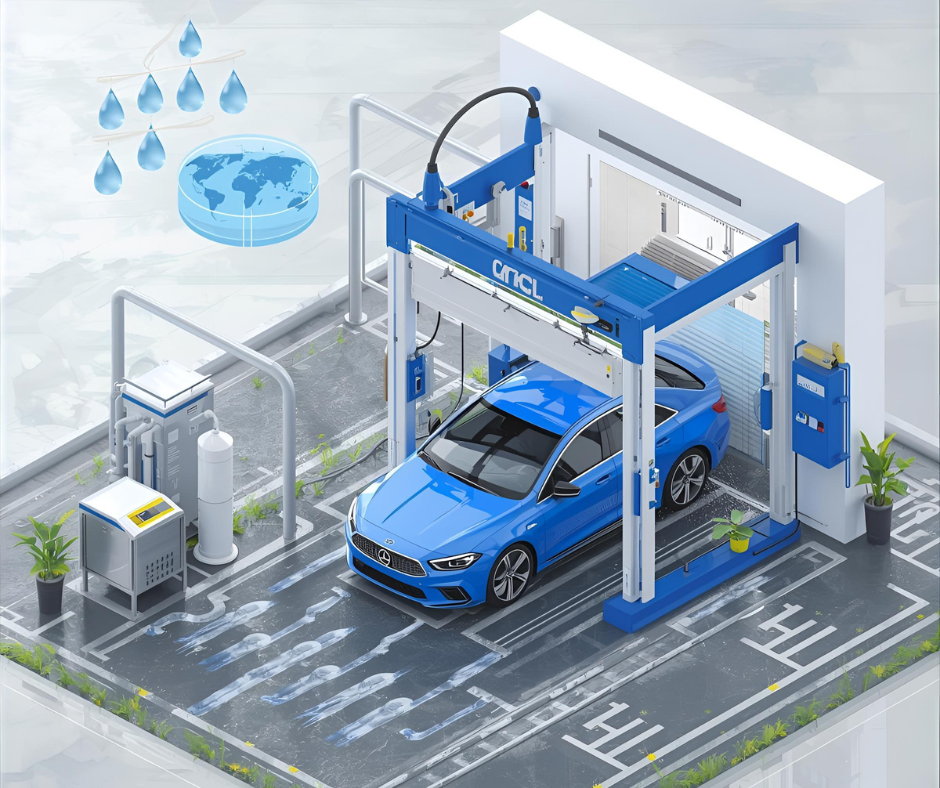Leveraging Water Reuse to Cut Costs, Boost Compliance, and Enhance Sustainability
Driving Business Efficiency Through Water Reclamation in U.S. Car Washes

Water scarcity, regulatory pressure, and rising water-costs are pushing the U.S. car wash industry toward smarter water use. In the United States, commercial car wash operations consume significant volumes of freshwater—studies show that an automatic bay or conveyor wash uses around 38 gallons per vehicle on average absent water reuse. As such, water reclamation—collecting, treating, and re-using wash and rinse water—is becoming both an environmental imperative and business opportunity for car wash operators.
One of the key drivers is regulation. For example, in states like California, car wash businesses must manage wastewater discharge in compliance with local waste-discharge orders (such as Order No. 93‑600) that cover vehicle maintenance, fuel service stations and car washes. In addition, federal guidance such as U.S. Environmental Protection Agency’s “WaterSense at Work” for vehicle washes recommends that if a reclamation system is in place, vehicle bays should include a dwell time (e.g., five seconds) to ensure runoff flows into the reclaim pit. These regulatory frameworks set the stage for adoption of water reclamation technologies and operational changes in the car wash sector.
Technological advances make reclamation feasible. A typical car wash water reclamation system collects used water, filters out sediments, oils and detergents, treats the water (via coagulation/flocculation, membrane filtration, UV or ozone disinfection), stores it and re-uses it for subsequent wash cycles. For instance, systems with capacities of 30–125 gallons per minute (gpm) with particulate filtration down to 5 microns are available for commercial car wash operations. The benefits are clear: less freshwater drawn in for each vehicle washed, reduced sewer discharge volume (hence lower sewer fees), improved environmental footprint, and potentially extended equipment lifespan since abrasive particles are removed from reused water.
However, the business case isn’t without its caveats. Upfront capital costs for installing reclamation systems can be substantial. As one analysis puts it, while the environmental and operating-cost benefits (water and sewer savings) are strong, the quality demands for reused water—particularly for final rinses—and the maintenance burden (filters, membranes, chemical dosing) introduce complexity and cost. Some car wash operators may find the payback period longer than expected if volumes are modest or water/sewer cost savings are limited. In addition, treatment levels must match use case: reused water for pre-soak may require only separation & filtration, whereas final rinse may demand reverse osmosis or deionization.
Looking at how this plays out in practice: A car wash operator deciding to install a water reclamation system should perform a detailed feasibility study. Key factors include: daily water volume, peak flow rates, current freshwater and sewer cost burdens, the quality of wastewater (oil, grit, chemicals), available space for tanks/settling, regulatory discharge requirements in their jurisdiction, and maintenance-capability. With proper design, a well-implemented system can reduce freshwater use per wash from around 80 gallons down to the 30–35 gallons range. Also, from a marketing standpoint, operators can promote their facility as “eco-friendly” or “water-smart”, which may appeal to increasingly sustainability-aware consumers. As industry commentary notes: “car wash facilities … can demonstrate the judicious way in which they use, collect, and in more and more instances, treat and reuse water.”
In sum: for car wash businesses in the U.S., water reclamation systems offer a compelling route toward both regulatory compliance and operational efficiency—but they require smart planning, maintenance discipline, and willingness to invest. As water becomes an ever more precious resource and as public expectations for environmental stewardship increase, operators who adopt reclamation systems may gain both cost-savings and brand advantage.
